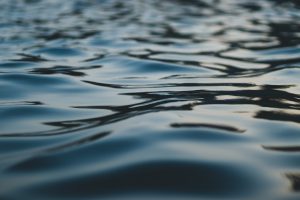Infrastructure and Planning
Protecting clean water in Illinois is essential to community, economic and ecosystem health.

GREAT LAKES
The Great Lakes is the largest freshwater ecosystem on Earth

infrastructure
Illinois's water resources face many infrastructure challenges

nutrient pollution
Nitrogen & phosphorus pollution degrade our water

drinking water
Lead in drinking water threatens many IL communities
Threats To Our Infrastructure
Current Infrastructure and Planning Laws
Created by the Illinois River Restoration Act of 1997 to coordinate initiatives, projects, and funding to promote the ecological health of the Illinois River and its tributaries by addressing issues identified in the Integrated Management Plan for the Illinois River Watershed.
The Council is Chaired by the Lt. Governor and composed of a diverse group of citizens, not-for-profit organizations, and state and federal agencies.
Chaired by the Lt. Governor and is composed of a diverse group of citizens, not-for-profit organizations, and state and federal agencies.
In 2005, the Great Lakes Governors and the Premiers of Ontario and Quebec signed the Great Lakes-St. Lawrence River Basin Sustainable Water Resources Agreement. At the same time, the Governors endorsed the companion Great Lakes-St. Lawrence River Basin Water Resources Compact, which became law in the United States in 2008. The Compact is legally binding among the eight Great Lakes states and the federal government, mandating the states to jointly determine how to manage the waters of the Great Lakes Basin.
The Act establishes a working group with representatives from state, federal, local agencies, and other interested parties to review and evaluate the latest research, policies, and procedures regarding urban flooding. Urban flooding can happen anywhere, not just in floodplains. This Act helps Illinois communities better understand urban flooding and identify innovative stormwater solutions to protect homes and the environment.
In furtherance of safeguarding the health and well-being of the populace, this Act requires any community water supply system to designate an operator who will be directly responsible for that system’s water supply and distribution. It also requires operators to be properly certified with the skills necessary to operate the community water supply.
Clean Water Updates
Illinois General Assembly Fails to Act on Accumulated Air Pollution in EJ Communities this Session, Advances New Pollution in Vulnerable Areas
SPRINGFIELD, IL — After missing multiple opportunities this Spring to protect environmental justice communities across Illinois, the Illinois General Assembly yesterday passed HB2878 and HJR23....
Read More >>Our Top Stay-at-Home Sustainability Tips
By Jen Walling | IEC Executive Director When so many of us are spending more time than usual at home due to the novel corona...
Read More >>General Assembly Sends Water Jobs Infrastructure Bill to Governor’s Desk
Clean Water Jobs for All Legislation Lays Groundwork for Thousands of New Jobs SPRINGFIELD, IL — Today, the Illinois State House of Representatives voted to...
Read More >>State Legislators, Stakeholders Announce Major Milestone for “Clean Water Jobs for All” Legislation
SPRINGFIELD — Today, State Sen. Ram Villivalam and State Rep. Justin Slaughter were joined by environmental and labor leaders from across Illinois to announce support...
Read More >>The Critical Need for Water Infrastructure Funding
It is past time for dedicated capital funding for water infrastructure to ensure every Illinoisan has access to clean, affordable water.
Read More >>The State of Water Infrastructure in Illinois
More and more emergency situations are arising from substandard water infrastructure, with the tragedy in Flint drawing national attention to this critical issue.
Read More >>


